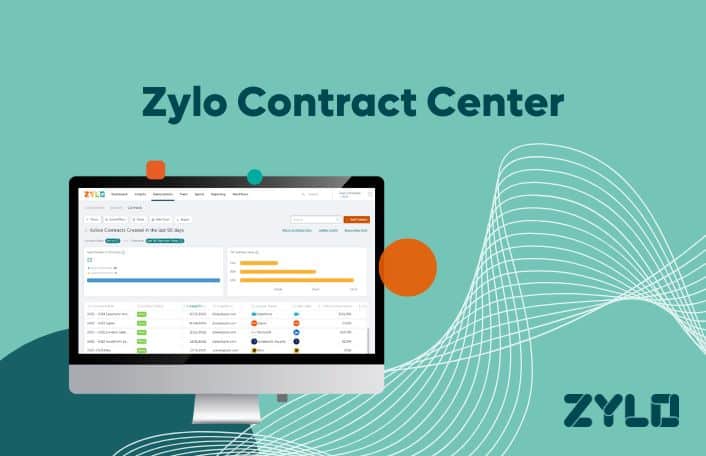
How to Negotiate Price Caps in Your SaaS Contracts
Table of Contents ToggleThe Death of Multi-Year ContractsThe Challenges Present in...
Back
Back
Search for Keywords...
Blog

Table of Contents
Imagine it’s 2022 and you signed a three-year SaaS contract in April of 2020. Yikes! You probably have unused licenses or low consumption rates that are essentially burning money. Things have changed dramatically in the past few years. Between the pandemic, remote work, economic recession, and layoffs, multi-year contracts have become dangerous.
If you have any experience in SaaS contracts and contract negotiation, you’ve probably been exposed to one of the hottest debates in procurement today: one-year or multi-year contracts.
Why are multi-year contracts falling off? Why are one-year agreements more popular? In this blog, we’ll cover what’s happening in the market to impact contract terms and why you should consider negotiating your multi-year contracts toward one-year increments.
First, why are multi-year contracts dying? The short answer: the market is too volatile for them. The longer answer: with how uncertain the market has become nowadays, CFOs are honing in on reducing operational expenses and increasing both cash flow and financial runway. Multi-year contracts can limit opportunities to achieve these goals.
While there’s still a case for multi-year contracts, they’ve fallen to the wayside for the time being and will be for the foreseeable future. While they may allow you to negotiate a greater discount or add in free services, it’s hard for companies to commit to a long-term agreement.
“In today’s economic climate, I say do away with the multi-year agreements,” said Zylo SaaS Services Manager Dylan Margonari. “Quite frankly, that’s a trend we’re seeing for our customers.”
Unless you have a crystal ball (which is unlikely), you can’t predict the future. There are way too many variables to commit to a two or even three-year contract. If you’re trying to negotiate effectively and be a procurement hero, single-year contracts are probably the way to go.
For more from Margonari on the debate between multi-year and one-year contracts, listen below.
Certainly, the state of the economy plays a huge part in whether you should go with a multi-year or one-year SaaS contract. But there are more challenges at play. Let’s break them down:
The Ultimate Guide for Wildly Effective SaaS Renewals
Learn MoreLet’s say you want a multi-year contract, despite the challenges therein. Well, you’re not totally out of luck. There are ways to negotiate multi-year contracts effectively and ensure you keep your organization safe from economic harm.
The name of the game: Getting terms in your contract that ensure price protection and transparency.
SaaS licensing is like Goldilocks and the Three Bears. Too few, and you risk overage costs. Too many, and you’re throwing money down the drain. It’s important to get it just right.
Margonari explained it like this. “Ensure you have the right user count and then add a little buffer into that user count to ensure your needs are met throughout that contract.”
Make sure your organization is covered sufficiently and that you add some breathing room for headcount changes. Consider the application’s usage rate and adoption, as well as company growth projections to understand what you’ll need over the contract term.
Negotiate an expansion rate table if you anticipate adding users during the contract’s term. As an example, let’s say you negotiate a price point for 100 users. Then, for 200 to 300 users, you negotiate a reduced rate per use due to economies of scale.
Ensuring this table is in your contract prevents you from needing to renegotiate and reinvent the wheel every single time you have a headcount increase, or you bring a new individual to the company or department.
Setting a price cap in your contract helps contain price increases at renewal. It’s especially helpful as vendors continue to raise prices.
When Margonari began in Procurement, a 5-7% increase was relatively common. “Now we’re seeing upwards of 15%, even higher than that across the board within the tech industry,” he said. “It’s hamstringing a lot of our customers.”
Price caps keep you safe from wild price increases that could obliterate your SaaS budget. When you’re negotiating price caps, keep in mind what is fair and reasonable and what isn’t.
Typically, a 3-5% price increase is acceptable. Beyond that, you can check the Consumer Price Index and see how prices for goods and services have changed, then base a cap on that.
While these are critical for multi-year contracts, be sure follow these tips on how to negotiate SaaS contracts for greater purchasing power.
Multi-year contracts are rife with challenges in today’s market. But what makes one-year contracts the superior alternative? Well, the main throughline of multi-year contracts’ challenges is that they are inflexible. Their rigidity has become increasingly dangerous and unhelpful in an increasingly volatile market.
Where multi-year contracts lack flexibility, one-year contracts are built for it. It’s nearly impossible to guess market conditions, headcount, or consumption rates three-plus years out. But one? Much more manageable – no crystal ball necessary.
One-year contracts empower you to negotiate with strong data and reasonable assumptions for the following year. You can feel more certain of your data at renewal, because it’s easier to plan for one year as opposed to five. Also, it helps you build a relationship with your vendors because you’ll be meeting more frequently and negotiating regularly.
No matter what kind of contract you’re negotiating – whether it’s a one-year or a five-year – it’s easy to be overwhelmed. The world of SaaS renewals and procurement is chaotic and ever-changing. Just keeping your head above water can feel like an Olympic trial, at times.
We all want to stand in first place on the podium. Having a dedicated procurement resource who helps you tackle more of your renewals and negotiate cost savings is what can get you there. Zylo’s team procurement and negotiation experts can help you:
Learn more about our SaaS Negotiator service or get in touch with our team.

Table of Contents ToggleThe Death of Multi-Year ContractsThe Challenges Present in...

Table of Contents ToggleThe Death of Multi-Year ContractsThe Challenges Present in...

Table of Contents ToggleIntroducing Zylo Contract CenterZylo Contract Center BenefitsSave TimeOptimize...

Table of Contents ToggleThe Death of Multi-Year ContractsThe Challenges Present in...
| Cookie | Duration | Description |
|---|---|---|
| cookielawinfo-checkbox-analytics | 11 months | This cookie is set by GDPR Cookie Consent plugin. The cookie is used to store the user consent for the cookies in the category "Analytics". |
| cookielawinfo-checkbox-functional | 11 months | The cookie is set by GDPR cookie consent to record the user consent for the cookies in the category "Functional". |
| cookielawinfo-checkbox-necessary | 11 months | This cookie is set by GDPR Cookie Consent plugin. The cookies is used to store the user consent for the cookies in the category "Necessary". |
| cookielawinfo-checkbox-others | 11 months | This cookie is set by GDPR Cookie Consent plugin. The cookie is used to store the user consent for the cookies in the category "Other. |
| cookielawinfo-checkbox-performance | 11 months | This cookie is set by GDPR Cookie Consent plugin. The cookie is used to store the user consent for the cookies in the category "Performance". |
| viewed_cookie_policy | 11 months | The cookie is set by the GDPR Cookie Consent plugin and is used to store whether or not user has consented to the use of cookies. It does not store any personal data. |
